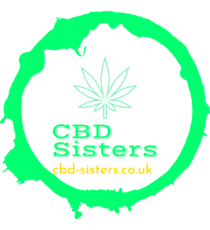Arrange a Dermal Filler Session with Dr. Laura Geige Now
## Understanding Filler Swelling
Filler swelling is a common and temporary side effect of dermal filler injections. It occurs when hyaluronic acid fillers, which are commonly used to plump up areas like the cheeks, lips, and nasolabial folds, draw in water molecules from surrounding tissue.
Book a Consultation for Dermal Fillers with Dr. Laura Geige at It’s Me and You Clinic
This process leads to an increase in volume in the injected area, resulting in swelling that can last anywhere from a few days to a week or two. The extent of swelling varies depending on several factors, including the type and amount of filler used, the individual’s metabolism, and their skin thickness.
In the case of nasolabial folds, which are the creases that run from the nose to the corners of the mouth, filler swelling can make them appear more pronounced initially. However, as the swelling subsides, the nasolabial folds will gradually soften and become less noticeable.
It’s important to note that some degree of swelling is expected after filler injections, and it should not be confused with allergic reactions or other complications. Patients are typically advised to avoid strenuous activity and facial massages for a few days following treatment to minimize swelling.
During the initial swelling phase, patients may want to apply cold compresses to reduce discomfort and inflammation. Over-the-counter pain relievers can also be helpful in managing any mild pain or tenderness.
As the swelling resolves, the final results of the filler treatment will become apparent. The nasolabial folds should appear smoother and more youthful, with a reduction in their depth and prominence.
Types of Filler Swelling

Expected vs. Unsettling Swelling
## Factors Influencing Swelling
Swelling is a common side effect following facial filler injections, but the type and duration of swelling can vary widely depending on several factors.
Understanding the difference between expected and unsettling swelling is crucial for managing post-treatment expectations and knowing when to seek medical attention.
Expected Swelling:
• Typically occurs within a few hours to days after injection.
• Generally mild to moderate in intensity.
• Often localized to the area of injection, with some potential for spreading to surrounding tissue.
• Gradually subsides over several days to weeks, typically reaching its minimal point around 7-10 days.
• Can be managed with cold compresses and gentle massage.
Unsettling Swelling:
• Develops unexpectedly or progresses significantly beyond the expected timeline.
• Characterized by intense pain, redness, warmth, or tenderness.
• May indicate complications such as infection, vascular occlusion, or an allergic reaction.
• Requires immediate medical attention.
Factors Influencing Swelling:
1. **Type of Filler:** Some fillers are more prone to causing swelling than others. Hyaluronic acid-based fillers tend to produce less swelling than calcium hydroxylapatite fillers.
2. **Injection Technique:** Proper injection technique is crucial for minimizing swelling. Injecting filler too superficially or into a delicate area can increase the risk of swelling.
3. **Individual Anatomy and Physiology:**
Everyone responds differently to injections. Some individuals naturally have a higher propensity for swelling.
Book a Consultation for Dermal Fillers with Dr. Laura Geige at It’s Me and You Clinic
4. **Underlying Medical Conditions:** Certain medical conditions, such as diabetes or autoimmune disorders, can increase the risk of complications and excessive swelling.
5. **Lifestyle Factors:** Smoking and alcohol consumption can interfere with healing and contribute to increased swelling.
6. Amount of Filler Injected:
Larger volumes of filler are more likely to cause significant swelling.

Injection Technique
Individual Healing Response
Other Contributing Factors
## Managing Nasolabial Fold Swelling After Filler
Beyond the natural swelling that occurs after any injectables procedure, several other factors can contribute to lingering or excessive nasolabial fold swelling following filler injections.
These include:
**Injection Technique:**
Improper injection depth or spreading of filler too widely can lead to increased tissue trauma and inflammation, prolonging swelling.
**Filler Type:**
Certain types of fillers are more viscous (thicker) than others, potentially causing more noticeable swelling initially. Hyaluronic acid (HA) fillers generally swell less than collagen or other permanent fillers.
**Individual Patient Factors:**
• **Age and Skin Elasticity:** Younger skin tends to heal faster with less swelling than older, more elastic skin.
• **Medical History:** Underlying medical conditions like autoimmune disorders or allergies can affect healing and potentially increase inflammation.
• **Medications:** Blood thinners or certain medications like NSAIDs can impact swelling.
• **Smoking:** Smoking impairs blood flow and healing, which can contribute to prolonged swelling.
**Environmental Factors:**
Exposure to extreme heat or cold, excessive sun exposure, and even altitude changes can influence fluid retention and worsen swelling.
It’s important to note that some swelling is normal after filler treatment and usually subsides within a few days to weeks. However, if you experience persistent or excessive swelling, consult your injector for advice and appropriate management.
Minimizing Post-Procedure Swelling
Addressing Concerns About Persistent Swelling
Cycle for Azaylia Josie Barrett D Magazine Salon Alabama Sig Delt
- Profhilo Treatment Near Forest Green, Surrey - May 31, 2025
- Vista Edge Vape Oil Leakage: How To Prevent And Fix It - May 31, 2025
- How To Recognize And Heal From The Damaging Effects Of Love Bombing - May 31, 2025
